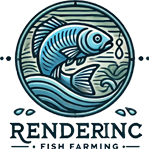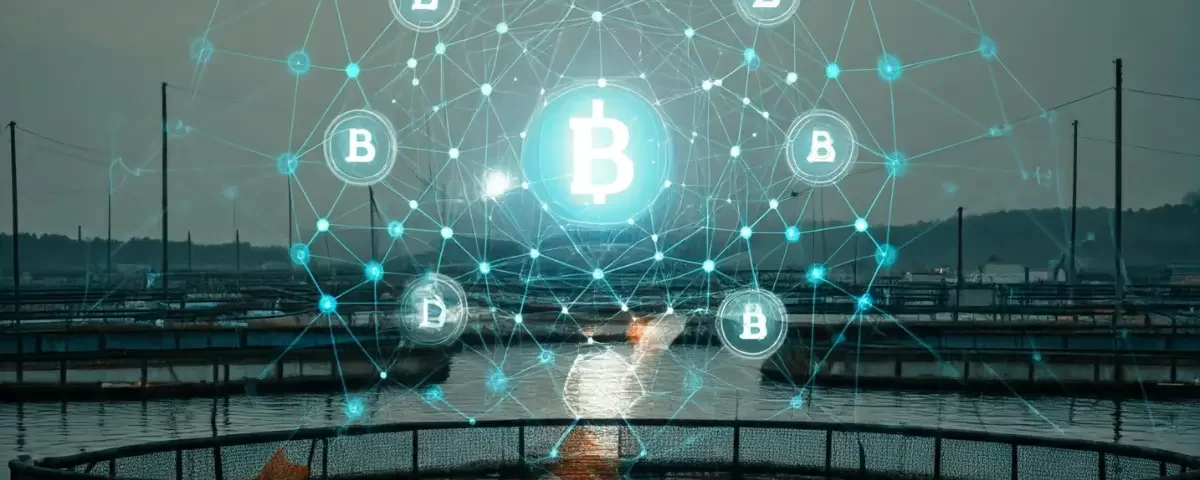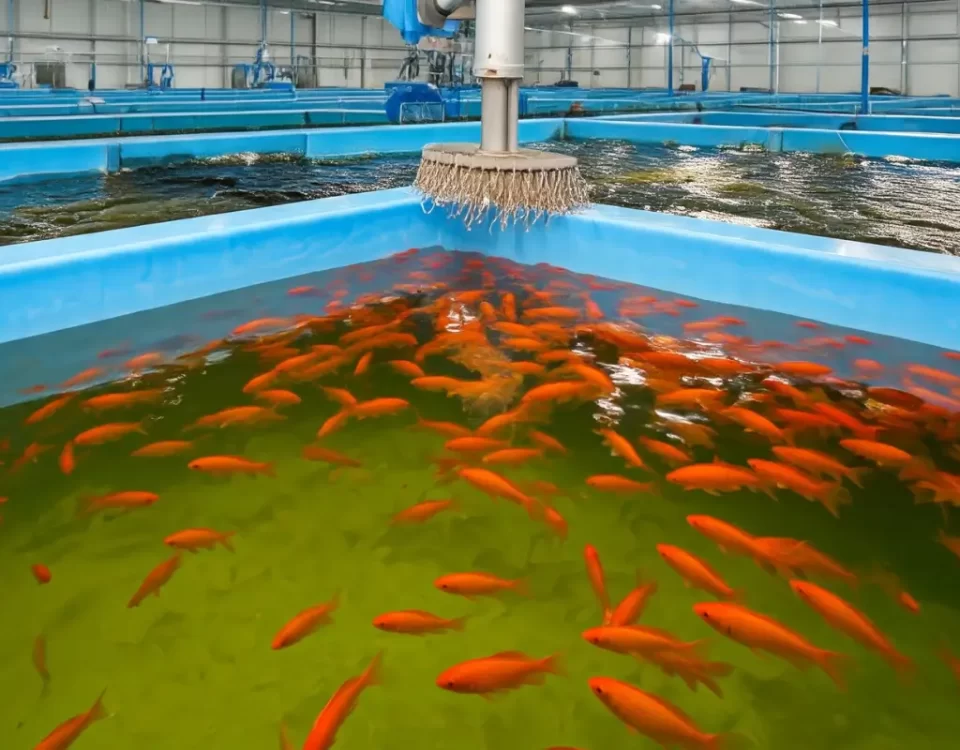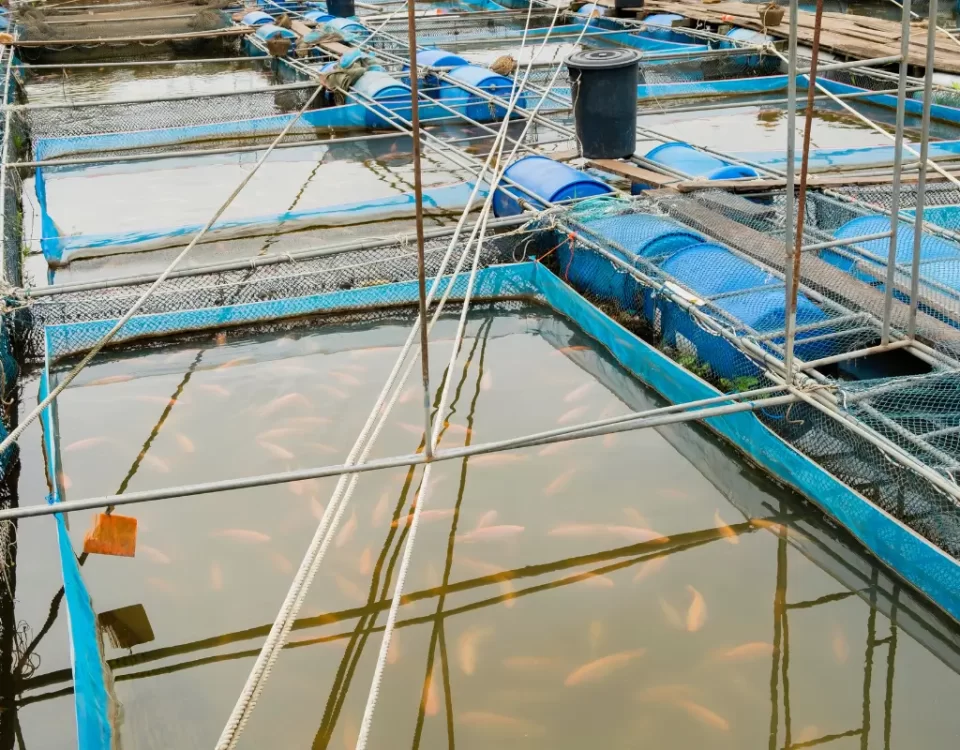How Blockchain is Enhancing Transparency in the Aquaculture Industry

The Economics of Fish Farming: Is it Profitable?
August 28, 2024
Top 10 Fish Species for Commercial Fish Farming
September 1, 2024In the dynamic landscape of technological innovation, blockchain technology has emerged as a powerful tool with the potential to revolutionize various industries, including the aquaculture sector. At its core, blockchain is a decentralized and secure digital ledger that records transactions across a network of computers. It operates using advanced cryptography to ensure the integrity and security of data stored within the chain. The decentralized nature of blockchain eliminates the need for intermediaries, providing a transparent and tamper-proof system for data management.
Transparency holds paramount importance in the aquaculture industry due to its implications for food safety, sustainability, and consumer trust. Consumers today are increasingly concerned about the origin and quality of the seafood they consume. Lack of transparency in the supply chain can lead to issues such as mislabeling, illegal fishing practices, and environmental degradation. In response to these challenges, the industry is turning to innovative solutions like blockchain to address the demand for greater transparency.
One of the key ways in which blockchain is being utilized to enhance transparency in fish farming is through the implementation of immutable ledger systems. By recording every transaction and movement of fish on the blockchain, stakeholders can trace the entire journey of a fish from hatchery to plate. This level of transparency enables consumers to verify the authenticity and sustainability of the seafood they purchase, fostering trust and confidence in the industry.
Moreover, blockchain technology facilitates the integration of smart contracts into aquaculture operations. Smart contracts are self-executing contracts with the terms of the agreement directly written into code. In the context of fish farming, smart contracts can automate and enforce agreements between farmers, suppliers, processors, and distributors. This automation streamlines processes, reduces the potential for human error, and enhances the overall efficiency and transparency of the supply chain.
Aquaculture Industry Overview
The aquaculture industry has experienced remarkable growth and significance on a global scale in recent years. With the ever-increasing demand for seafood and the declining availability of wild-caught fish, aquaculture has emerged as a vital solution to meet the world’s seafood needs. Countries like China, Indonesia, India, and Vietnam have taken the lead in aquaculture production, contributing significantly to the industry’s expansion.
Growth and Importance
The aquaculture industry plays a pivotal role in ensuring food security and providing a sustainable source of protein to a growing population. According to the Food and Agriculture Organization (FAO), aquaculture contributes to nearly half of the world’s total fish consumption. The industry’s economic impact is substantial, providing employment opportunities, especially in rural and coastal areas. Moreover, aquaculture has the potential to reduce pressure on overexploited wild fish stocks, thus promoting environmental conservation.
Challenges in Transparency and Traceability
Despite its rapid growth and undeniable benefits, the aquaculture industry faces several challenges related to transparency, traceability, and sustainability. One of the significant issues is the lack of transparency in the supply chain, making it difficult for consumers to verify the origin and production practices of the seafood they purchase. The complex nature of the aquaculture supply chain, with multiple intermediaries involved, often results in information opacity and potential instances of mislabeling or fraud.
Addressing Sustainability Concerns
Sustainability is another critical aspect that the aquaculture industry grapples with. Issues such as overfishing, habitat destruction, water pollution, and disease outbreaks pose threats to the long-term viability of fish farming operations. Achieving a balance between economic profitability and environmental responsibility is essential to ensure the industry’s sustainability. Implementing practices that minimize environmental impact, promote animal welfare, and enhance resource efficiency are key steps toward building a more sustainable aquaculture sector.
The Role of Blockchain Technology
Amid these challenges, blockchain technology has emerged as a promising solution to enhance transparency, traceability, and trust in the aquaculture industry. By leveraging blockchain’s decentralized ledger system, stakeholders can record and track every transaction and data point along the supply chain in a secure and immutable manner. This technology enables consumers to access real-time information about the seafood they purchase, including details on the origin, harvesting methods, processing, and transportation. In addition, blockchain facilitates certifications and audits, ensuring compliance with sustainability standards and ethical practices.
Understanding Blockchain Technology
Blockchain technology has emerged as a revolutionary concept with far-reaching implications across various industries, including the aquaculture sector. At its core, blockchain is a digital ledger that records transactions in a secure and decentralized manner. Unlike traditional centralized databases, where a single entity controls the data, blockchain operates on a network of computers (nodes) that collectively validate and store information.
How does blockchain work? Each transaction on a blockchain is encrypted into a block, which is then linked to the previous block, forming a chain of blocks – hence the name ‘blockchain.’ This linked structure ensures the integrity and security of the information stored within it. Additionally, blockchain uses cryptography to secure the data, making it virtually tamper-proof.
One of the key features of blockchain is its decentralization. Rather than relying on a central authority, blockchain transactions are validated by multiple nodes in the network, ensuring a high level of trust and transparency. This decentralization makes it nearly impossible for a single entity to manipulate the data, thereby enhancing security and trust in the system.
Another hallmark of blockchain technology is its transparency. All transactions recorded on the blockchain are visible to all participants in real-time, fostering accountability and reducing the risk of fraud. This level of transparency is particularly valuable in industries where traceability and provenance are crucial, such as the food and pharmaceutical sectors.
Immutability is another critical aspect of blockchain. Once a transaction is recorded on the blockchain, it cannot be altered or deleted, ensuring a permanent and auditable record of all activities. This feature adds an extra layer of security and authenticity to the data stored on the blockchain.
Numerous industries have already leveraged blockchain technology to enhance efficiency and security in their operations. For instance, the financial sector has adopted blockchain for cryptocurrencies like Bitcoin, enabling secure and transparent transactions without the need for intermediaries. Supply chain management is another area where blockchain has proven beneficial, allowing companies to track products from farm to fork, ensuring quality and authenticity along the way.
The Role of Blockchain in Enhancing Transparency in Aquaculture
The aquaculture industry is increasingly seeking ways to improve transparency and accountability in fish farming practices. One revolutionary technology that has emerged as a powerful tool in this quest is blockchain. Blockchain is a decentralized, distributed ledger technology that offers a secure and transparent way to record transactions and data. In the realm of aquaculture, blockchain’s potential in enhancing transparency is significant.
How Blockchain Enhances Transparency in Aquaculture
Blockchain technology can help improve transparency in the aquaculture industry by providing an immutable record of transactions and data related to fish farming practices. Each transaction, such as the transfer of fish from one location to another or the monitoring of feeding practices, is recorded in a block, which is then added to a chain of blocks. This creates a tamper-proof and transparent record of every activity within the aquaculture supply chain. By leveraging blockchain, stakeholders can easily trace the journey of fish from farm to fork, ensuring authenticity and quality.
Benefits of Using Blockchain Technology for Traceability and Accountability in Fish Farming
The utilization of blockchain technology in the aquaculture industry offers numerous benefits for traceability and accountability. Firstly, blockchain enhances traceability by providing real-time access to the entire supply chain network, allowing stakeholders to track the origins and journey of fish products. This transparency not only builds consumer trust but also enables swift responses to any food safety concerns. Moreover, blockchain promotes accountability by ensuring that data cannot be altered or manipulated, thus holding all involved parties responsible for their actions.
Examples of Specific Blockchain Projects in Aquaculture and Their Impact on Transparency
Several blockchain projects have been implemented in the aquaculture industry, showcasing the tangible impact of this technology on enhancing transparency. For instance, the Global Fishing Watch initiative utilizes blockchain to track fish products from catch to sale, enabling consumers to verify the sustainability of their seafood choices. Another notable project is AquaSpark, which uses blockchain to record crucial data such as water quality parameters and feed sourcing, thereby ensuring quality control and sustainability in fish farming practices. These initiatives demonstrate how blockchain can revolutionize the aquaculture industry by promoting transparency and sustainability.
Implementing Blockchain Solutions in Aquaculture
The integration of blockchain technology in the aquaculture industry is revolutionizing the way fish farming operations are managed. By leveraging blockchain solutions, transparency, traceability, and sustainability are being greatly enhanced across the sector. Let’s delve into the practical applications of blockchain technology in fish farming and explore different use cases that are reshaping the industry landscape.
Tracking Fish Origins
One of the primary use cases of blockchain in aquaculture is the ability to track the origins of fish from hatchery to market. By recording crucial data points such as location, feed, water quality, and veterinary treatments on an immutable blockchain ledger, consumers and stakeholders can gain real-time insights into the journey of the fish they consume. This level of transparency not only builds consumer trust but also helps in combating fraudulent practices within the supply chain.
Monitoring Water Quality
Blockchain technology is also being utilized to monitor and record water quality parameters in aquaculture facilities. By integrating sensors and IoT devices that collect data on temperature, pH levels, dissolved oxygen, and more, this information can be securely stored on the blockchain. These data points help farmers in maintaining optimal conditions for fish growth and overall health, thereby ensuring sustainable practices.
Ensuring Sustainable Practices
Ensuring sustainability in fish farming is paramount to safeguarding the environment and meeting consumer demands for ethically sourced seafood. Blockchain solutions enable farmers to demonstrate their commitment to sustainable practices by providing proof of compliance with certifications such as ASC and BAP. However, challenges such as cost, scalability, and integration with existing systems remain hurdles in the widespread adoption of blockchain in the aquaculture industry.
Addressing Challenges and Limitations
While the potential benefits of implementing blockchain solutions in aquaculture are vast, challenges must be acknowledged and addressed for successful integration. Interoperability with different blockchain platforms, data privacy concerns, standardization, and regulatory frameworks are some of the key challenges that need to be navigated. Overcoming these obstacles will require collaboration between industry players, technology providers, and regulators to create a robust and efficient blockchain ecosystem for the aquaculture sector.
Case Studies of Successful Blockchain Projects in Aquaculture
In the realm of aquaculture, the integration of blockchain technology has catalyzed a transformation in transparency and trust within the supply chain. Let’s delve into some illuminating case studies that exemplify the successful implementation of blockchain solutions in fish farming.
ACME Fisheries: Pioneering Transparency Through Blockchain
One notable entity at the forefront of this technological shift is ACME Fisheries, a sustainable fish farming company based in Norway. By leveraging blockchain to record every crucial stage of their salmon production, ACME has enabled consumers to trace the journey of each fish from egg to plate. Through a user-friendly interface, customers can scan a QR code and access details on feeding practices, water quality, and even the specific ocean pen where the salmon was raised.
The outcomes of ACME’s blockchain initiative have been profound. Not only has consumer trust in the quality and sustainability of their seafood skyrocketed, but the company has also witnessed a significant reduction in instances of mislabeling and fraud within the supply chain. By fostering a system of immutable, secure records, ACME has set a new standard for transparency and accountability in the aquaculture industry.
AquaTech Solutions: Streamlining Operations for Maximum Efficiency
On the other side of the globe, AquaTech Solutions in Japan has embraced blockchain technology to optimize their fish farming processes. By implementing a blockchain platform that seamlessly integrates data from sensors monitoring water quality, feed usage, and temperature controls, AquaTech has achieved a new level of operational efficiency.
The benefits of this blockchain integration have been twofold for AquaTech. Not only has the company drastically reduced human errors and operational costs, but they have also improved the overall health and growth rates of their fish stocks. By having real-time access to critical data points, AquaTech can quickly identify and address any anomalies, ensuring a sustainable and high-quality yield.
Global Aquaculture Alliance: Building Trust Across the Industry
Steering towards a collective approach, the Global Aquaculture Alliance (GAA) has spearheaded a blockchain initiative aimed at fostering trust and collaboration among aquaculture stakeholders worldwide. By creating a decentralized ledger for industry participants to securely share information on best practices, certifications, and sustainability efforts, GAA has paved the way for a more unified and transparent supply chain.
Through this collaborative blockchain platform, GAA has not only empowered smaller fish farming operations to showcase their adherence to industry standards but has also facilitated knowledge sharing and innovation across borders. The lessons learned from this project highlight the immense potential of blockchain technology in bridging gaps, fostering cooperation, and ensuring the long-term sustainability of the aquaculture industry.
OceanChain: Empowering Small-Scale Fishermen with Blockchain
In the realm of small-scale fisheries, OceanChain has emerged as a beacon of empowerment through blockchain. By providing fishermen with a secure digital ledger to document their catches, track fishing zones, and share pricing information, OceanChain has revolutionized the way in which local fishing communities operate.
The impact of OceanChain’s blockchain solution extends beyond just transparent transactions. By empowering fishermen with direct access to market data and fair pricing mechanisms, the platform has elevated the socio-economic status of small-scale fishing communities, fostering resilience and sustainability in traditionally marginalized sectors.
In conclusion, these diverse case studies underscore the pivotal role of blockchain technology in revolutionizing the aquaculture industry. By enhancing transparency, efficiency, and trust within the supply chain, these pioneering projects have set a new standard for sustainability and accountability in fish farming practices.
Future Outlook and Potential Impact of Blockchain on Aquaculture
As blockchain technology continues to evolve and expand its reach, the future trends and opportunities for its application in the fish farming industry are promising. One key area where blockchain can make a significant impact is in traceability. By leveraging blockchain, aquaculture producers can create an immutable record of their fish farming practices, from hatchery to harvest, providing consumers with a transparent view of the entire supply chain. This enhanced level of transparency can help build consumer trust and loyalty, ultimately driving demand for sustainably sourced seafood.
Enhancing Transparency, Sustainability, and Consumer Confidence
Looking ahead, blockchain technology has the potential to further enhance transparency, sustainability, and consumer confidence in aquaculture. Through the use of smart contracts, stakeholders in the industry can ensure that best practices are being followed at every stage of the production process. For instance, smart contracts can automatically verify that fish feed is sourced from sustainable sources or that aquaculture facilities adhere to environmental regulations. By promoting greater accountability and responsibility in the industry, blockchain can help foster a culture of sustainability and ethical practices.
Potential Challenges and Areas for Further Research
Despite its potential benefits, the adoption of blockchain in aquaculture may face challenges related to integration, cost, and scalability. Integrating blockchain technology into existing systems and workflows can be a complex and resource-intensive process, requiring investment in training and infrastructure. Moreover, the costs associated with blockchain implementation and maintenance may pose barriers for smaller aquaculture operations. Addressing these challenges will require collaboration between industry stakeholders, technology providers, and policymakers to develop solutions that are accessible and affordable for all players in the aquaculture supply chain.
Future Research and Development in Blockchain for Aquaculture
As the use of blockchain in aquaculture evolves, there are opportunities for further research and development to explore new use cases and innovations. One area of interest is the integration of Internet of Things (IoT) devices with blockchain technology to enable real-time monitoring of water quality, feeding patterns, and other critical metrics in aquaculture operations. Additionally, exploring the use of machine learning and artificial intelligence algorithms to analyze data stored on the blockchain can help identify trends, optimize production processes, and detect anomalies in fish farming practices. By investing in ongoing research and development, the aquaculture industry can unlock the full potential of blockchain technology to drive sustainability, transparency, and innovation in the years to come.
In conclusion, blockchain technology has emerged as a groundbreaking tool in enhancing transparency within the aquaculture industry. By enabling secure and immutable record-keeping of crucial data points throughout the seafood supply chain, blockchain has ushered in a new era of accountability and traceability. From tracking the origin of fish to monitoring the conditions in which they are raised, blockchain ensures that every step of the aquaculture process remains transparent and accessible to consumers and stakeholders alike.
The importance of leveraging technology for sustainable and responsible fish farming practices cannot be overstated. As the global demand for seafood continues to rise, it is crucial for aquaculture businesses to adopt innovative solutions that prioritize environmental stewardship and ethical standards. Blockchain not only provides a means to verify the integrity of seafood products but also empowers consumers to make informed choices that align with their values.
Moving forward, there is a clear call to action for the aquaculture industry to further embrace blockchain solutions in order to drive positive change. By promoting greater transparency and trust among all participants in the supply chain, blockchain has the potential to revolutionize the way seafood is produced, distributed, and consumed. It is essential for fish farming businesses to recognize the transformative benefits of blockchain technology and actively seek out opportunities to integrate these solutions into their operations.
As we look towards the future of the aquaculture sector, it is evident that blockchain will continue to play a pivotal role in shaping a more sustainable and ethical industry. By championing transparency, accountability, and innovation, blockchain empowers stakeholders to work towards a shared goal of promoting responsible fish farming practices and ensuring the long-term health of our oceans. Embracing blockchain is not merely a choice but a necessity for those committed to driving positive change in the aquaculture industry.

Michael Rivers is an experienced aquaculture enthusiast with over a decade of hands-on knowledge in fish farming and sustainable aquatic systems. Passionate about promoting eco-friendly practices, he shares his expertise on fish breeding, water management, and the latest advancements in aquaculture technology. Through his blog, Michael aims to help both beginners and seasoned fish farmers achieve success in their ventures while contributing to the growth of sustainable food production.




